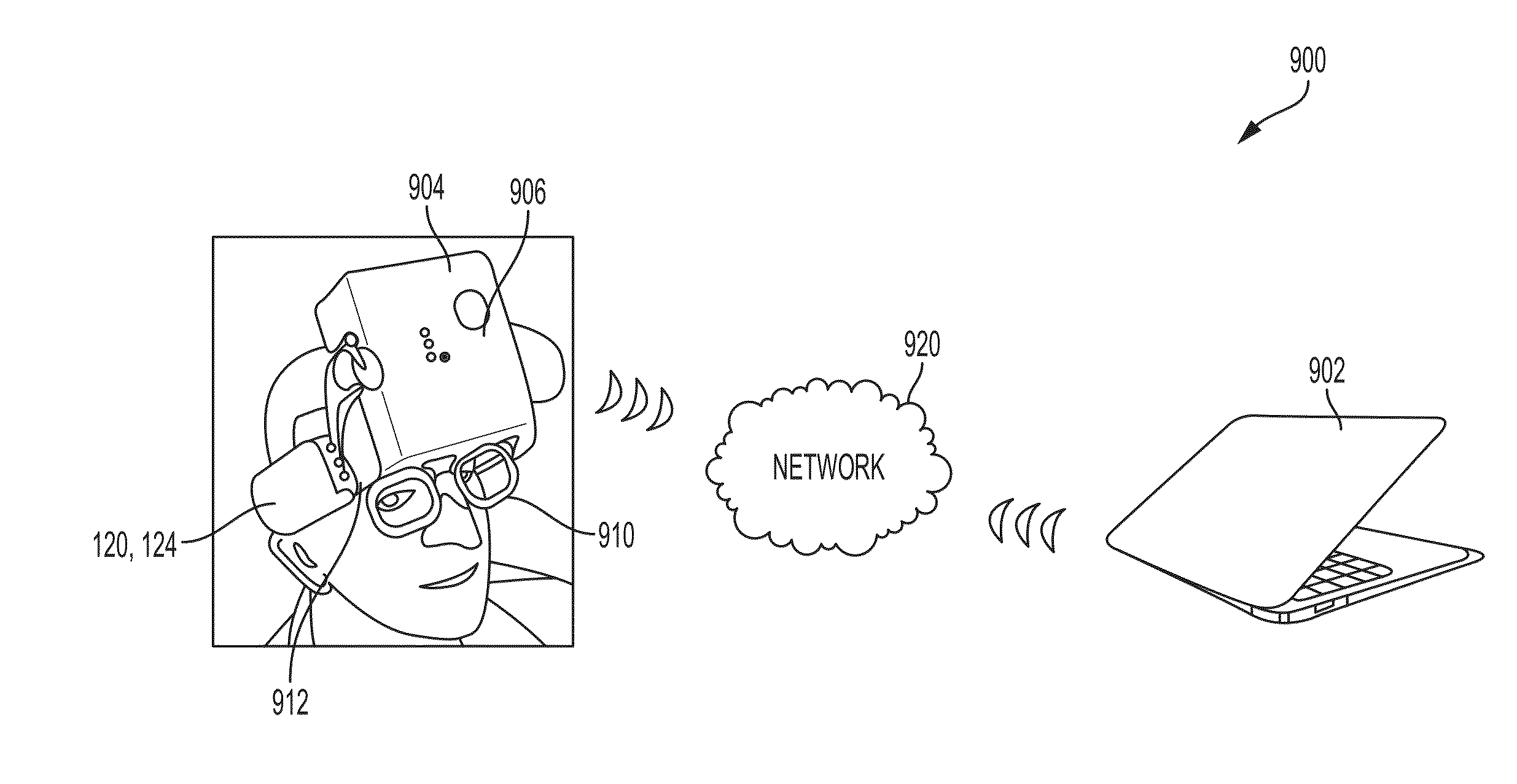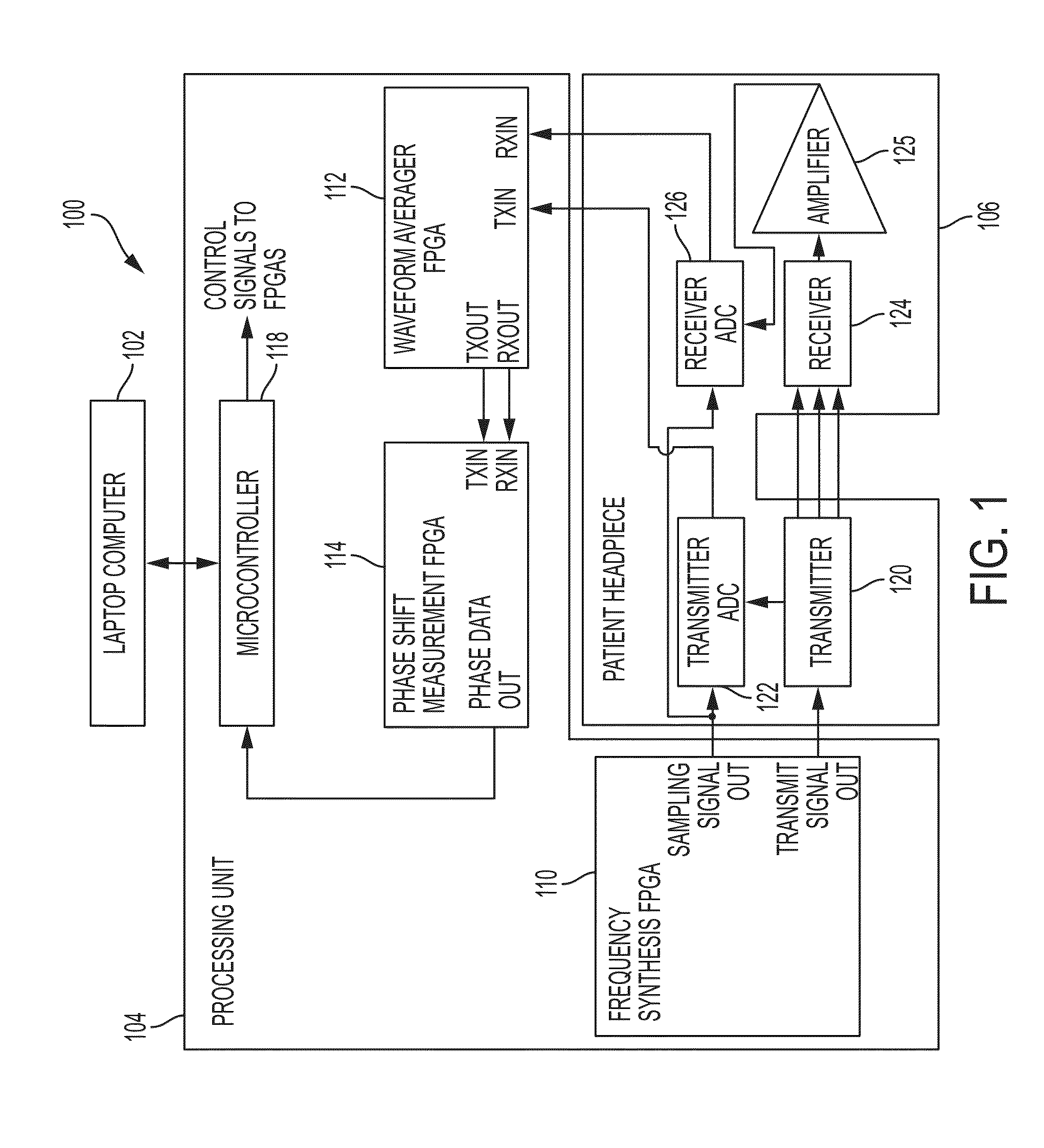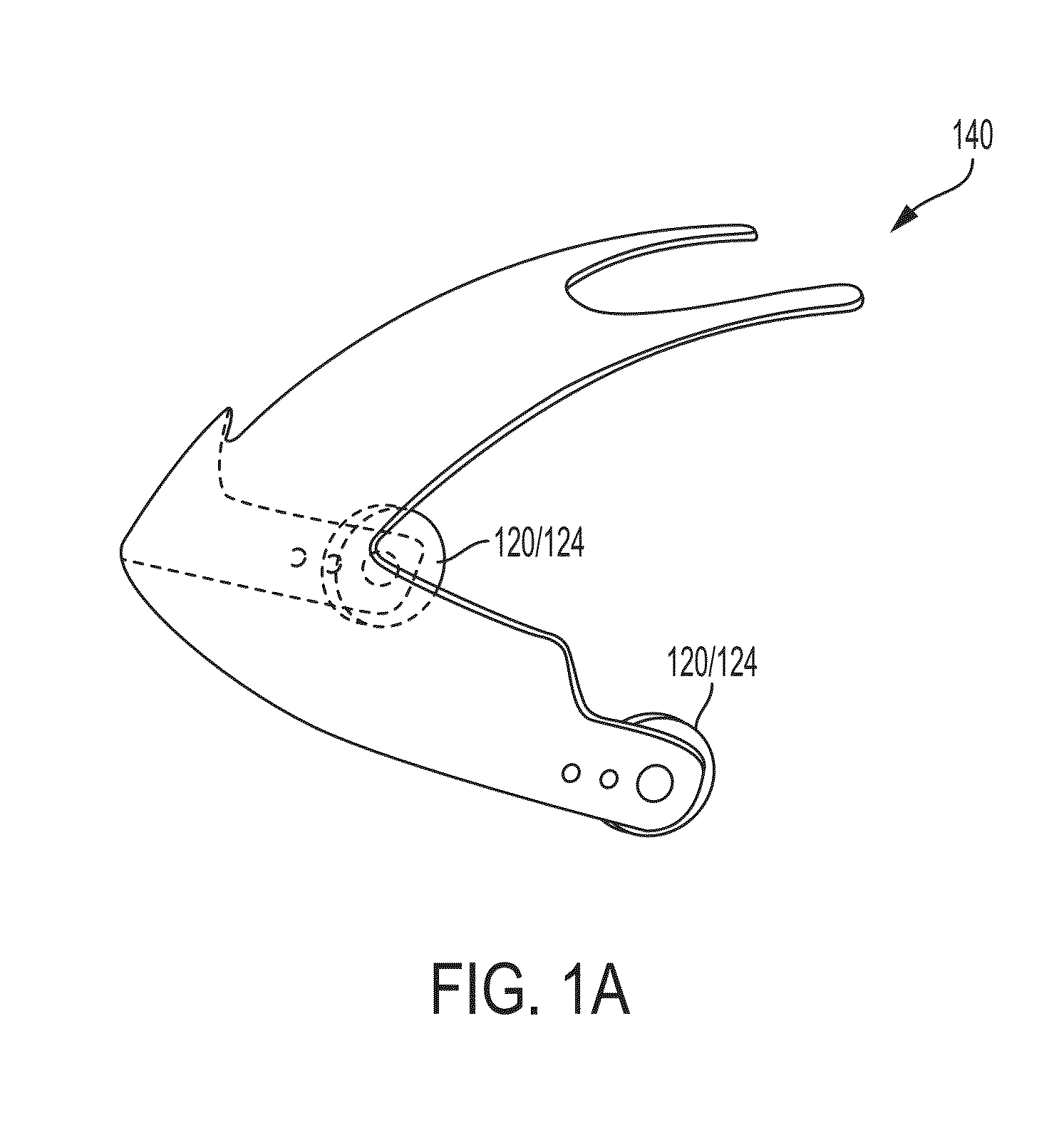Detection and analysis of spatially varying fluid levels using magnetic signals
a magnetic signal and fluid level technology, applied in the field of noninvasive, diagnostic, medical devices, systems and methods, can solve the problems of not having continuous monitoring technology available to alert clinical staff, many brain injuries not severe enough to warrant drilling a hole in the cranium, and no continuous monitoring technology
- Summary
- Abstract
- Description
- Claims
- Application Information
AI Technical Summary
Benefits of technology
Problems solved by technology
Method used
Image
Examples
experimental example
[0171]This experiment was based on the idea that substantial insight can be found in the electromagnetic signature response to a voluntary change in tissue condition. This could lead to a much more controlled diagnostic method, based on electromagnetic measurements of biological tissue condition. In our experiment, a voluntary change was produced in the interrogated organ or tissue, and the diagnostics were performed by evaluating the changes of electromagnetic properties that occurred in those organs or tissue in response to the voluntary produced change and correlating these changes to the voluntary action.
[0172]One example of the method relates to brain concussion, an important medical problem in sports medicine. Sports induced concussion or mild traumatic brain injury (mTBI) is of increasing concern in sports medicine. Neuropsychological examination is the main diagnostic tool for detecting mTBI. However, mTBI also produces physiological effects that include changes in heart rat...
PUM
 Login to View More
Login to View More Abstract
Description
Claims
Application Information
 Login to View More
Login to View More - R&D
- Intellectual Property
- Life Sciences
- Materials
- Tech Scout
- Unparalleled Data Quality
- Higher Quality Content
- 60% Fewer Hallucinations
Browse by: Latest US Patents, China's latest patents, Technical Efficacy Thesaurus, Application Domain, Technology Topic, Popular Technical Reports.
© 2025 PatSnap. All rights reserved.Legal|Privacy policy|Modern Slavery Act Transparency Statement|Sitemap|About US| Contact US: help@patsnap.com



